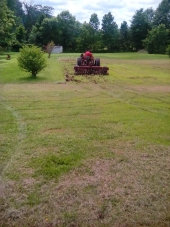
 1
1




Permaculture and Homestead Blogging on the Traditional Catholic Homestead in Idaho! Jump to popular topics here: Propagating Morels!, Continuous Brew Kombucha!, and The Perfect Homestead Cow!
 1
1




 2
2




 3
3









 2
2




Permaculture and Homestead Blogging on the Traditional Catholic Homestead in Idaho! Jump to popular topics here: Propagating Morels!, Continuous Brew Kombucha!, and The Perfect Homestead Cow!
 1
1









 1
1




michelle salois wrote:I've just been thinking I want to move to this method too. I've not been happy with the wood chips approach since smaller seeds just don't work as well but grass invaded anyway. gotta find a way to transport hay though to my city lot.
Permaculture and Homestead Blogging on the Traditional Catholic Homestead in Idaho! Jump to popular topics here: Propagating Morels!, Continuous Brew Kombucha!, and The Perfect Homestead Cow!
 1
1








 1
1




michelle salois wrote:I've just been thinking I want to move to this method too. I've not been happy with the wood chips approach since smaller seeds just don't work as well but grass invaded anyway. gotta find a way to transport hay though to my city lot.
"People may doubt what you say, but they will believe what you do."
 5
5




Check out we're up to:
https://www.facebook.com/OmandsOrganics
 1
1




"People may doubt what you say, but they will believe what you do."
 1
1




 1
1








Nothing difficult is ever easy!
 1
1





|
Spare the rod, spoil the child. Here, use this tiny ad named Rod:
The new kickstarter is now live!
https://www.kickstarter.com/projects/paulwheaton/garden-cards
|







